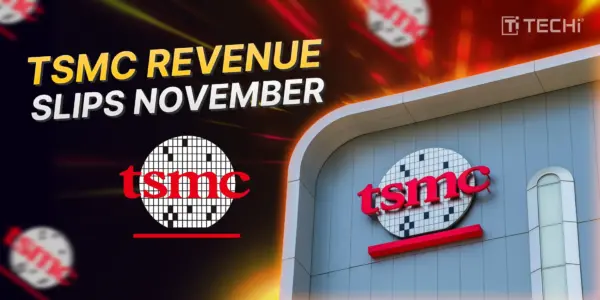Last week, when rumors broke that YouTube might finally become profitable, most of the response was actually pretty snarky.
As an example, take the initial post at Slashdot – it suggested that it was about time that YouTube was making some money. If anything, YouTube’s success – which certainly has been a long time coming – seemed like something that was well overdue.
But another take on YouTube’s slow, steady move into profitability is a bit different. Instead of snarky, it is optimistic.
Why? Well, first is that maybe it had to take this long to create a viable online business model for video; and second is that, though YouTube’s model meant profitability was a long time coming, that it has now proven to work means it is in fact a model and a beacon of hope of for other online businesses going forward.The Online Conundrum: How The H@&# Do You Make Money?
This is the problem for online media businesses, is it not?
As we exist in this weird historical moment of transition from the pre-web era to the future, even the world’s best minds are struggling to figure out how to produce profit online. You might have heard one or two stories about ‘the future of newspapers‘ or the ‘future of the TV biz’. Or, ya’ know, nine thousand of them. Whatever.
So why is there so much discussion? Well, very roughly:
- Attention has become scattered – not because of ADD, but because of how the web works. If you magazine had 300,000 subscribers before, those same people might still read 1 or 2 pieces from your rag – but also 10 or 20 others from 10 or 20 other sites. The web massively expanded what individuals have access to, fragmenting the amount of attention paid to individual entities.
- Advertising online is… well, hm, how do I put this delicately? Oh, right: it blows. Flashing text that says “Click here for a discount”! Brilliant! More seriously though, no-one has cracked the code to up user engagement in light of the fragmentation of attention, or which type of ad actually works. Online ads are an enigma wrapped in a puzzle – that are then put into a really annoying Flash container that eats up CPU cycles.
- People don’t want to pay for things – not so much because they’re cheap, but because there’s so much free stuff available. Album purchases have been impacted by streaming and torrenting. But it’s not just ‘entitlement’; it’s a cultural change.
- But most important of all? Content owners cannot control what happens to their content once it goes online. It gets re-purposed. It gets remixed. It gets mashed up. Hell, sometimes, it just gets stolen. If one or two people do it in an obvious manner, it’s easy to contain. If 200,000 people do it, it’s a touch more tricky.
When You Can’t Beat Them, Join Them
In many ways, YouTube was a symbol for the contemporary internet: a huge mass of content, hundreds of millions of page views, cultural ubiquity – and no money.
In part, this was due to the fact that YouTube was full of other people’s content. One of the big reasons YouTube exploded was because of people uploading Daily Show clips. So no-one wanted to put ads up on vids because things would get taken down – plus, you’d kinda’ be encouraging copyright infringement.
What changed? Well, YouTube finally worked out the tech side of things, by introducing a ContentID system that detected when, say, EMI or Viacom’s content went up. But it also convinced content owners to run ads against user-uploaded videos instead of taking them down. That way, when sw33tcheeks99 puts up a video lip syncing to Teenage Dream, instead of issuing a takedown notice, YouTube runs ads, and then split the ad revenue with content owners.
What’s the big deal? YouTube has finally hit on a ‘native-to-the-web’ business model that actually deals with the reality of the web: instead of trying to control a billion-headed beast, they have instead monetized it.A Web Solution For a Web Problem
https://www.youtube.com/watch?v=M5qx-MVrXfkWhat’s the magical secret? Aggregation.
You cannot control the spreading and re-use of your content online. The web, by its very nature, is about copying and proliferating. I mean, it’s a hyper-link, right?
But what you can do is take thousands of scattered instances of your content, monetize it in a small but significant ways (i.e. ads) and then aggregate those small little bits of income into bigger bits of income.
It’s not the idea, however, that’s the hard part; it’s the technology and the financial infrastructure. YouTube’s solution wasn’t “hey, let’s collect money on stuff!”. That’s obvious. It was “hey, let’s make it possible so that we collect money on the proliferation of content and then spread that revenue to everyone involved in its proliferation.”
That’s new. That’s different from TV and radio and the music industry. It actually acknowledges what’s different about the internet, because it admits that the channels of distribution are no longer owned by the same people who make the content – but that there are still ways to make revenue that aren’t about charging a toll to access content.
It’s a ‘web solution’ because unlike say DRM’ed ebooks and movies, it deals with the reality that digital content is infinitely copyable, easy to manipulate and impossible to control. Instead of trying to lock content down, it’s an admission that content will spread and that this is a good thing for everyone involved.
A Model For The Web
Okay, so maybe YouTube haven’t “saved the internet”. But they have provided a model for internet businesses: attempt to make money through how the web functions, not by trying to limit how it functions. This is the massive difference between, say, Rupert Murdoch’s approach to paywalls and YouTube’s take on revenue generation.And to be a bit blunt: one is obsolete; and one is the future.




